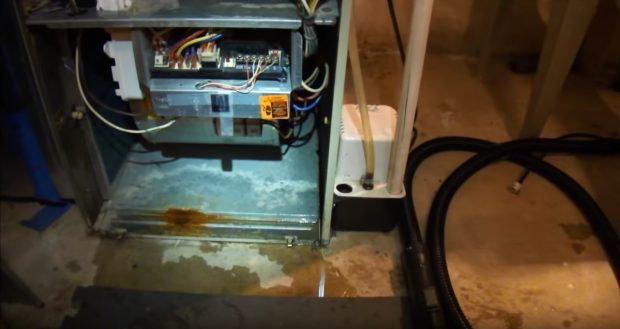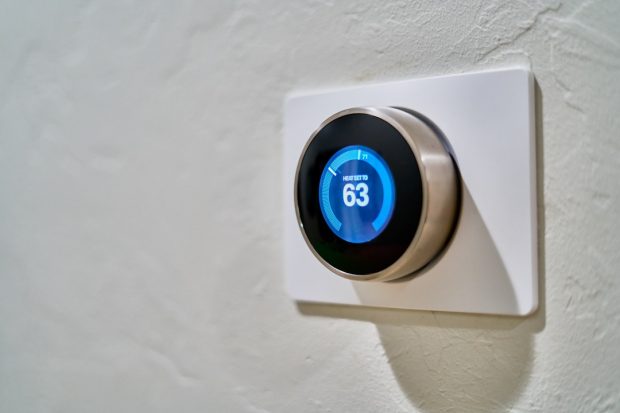The flue on your furnace is designed to vent dangerous fumes away from your home and outside. When your gas heating system works correctly, your home is heated safely and efficiently. However, if the flue is clogged or damaged, it can’t function correctly and could put your home and family at risk.
It is important to have every gas-burning appliance and the associated venting system in your home inspected and cleaned regularly. However, even with proper care, issues may occasionally develop due to animal damage or debris clogging the pipe. If your flue has a problem, you may notice several signs of a clogged furnace. Let’s take a look at some symptoms of a clogged furnace.
Excessive Soot
If you notice excessive amounts of soot around your furnace flue, it might be a sign of an issue with your equipment. As a result of the combustion inside your gas equipment, fumes and gases are produced that are vented out of your home through the flue. However, if there’s a clog in your flue pipe, those fumes could remain inside the furnace and create heavy amounts of soot. If you notice more soot than normal, you may need to contact an HVAC technician to check for a blockage.
Moisture Streaking the Furnace Wall

Another indication that your furnace flue may be clogged is the presence of water on the walls of your furnace. When your system is working properly, warm vapors safely exit your home through the flue. However, airflow is restricted when there’s a clog or blockage, and the vapors could condensate inside the pipe. As a result, moisture could build inside the flue and begin streaking the furnace walls. Additionally, a moisture buildup could also cause rust and corrosion to form, providing a visible sign that something is wrong. If you spot water or rust streaking the walls of your furnace, you might need an HVAC professional to inspect your vent pipe.
Yellow Pilot Flame
When your heating system is working properly, your pilot light should look blue. If you notice a change in flame color, it could indicate an issue with your furnace flue. While flame color isn’t always an indicator of a serious problem, a yellow flame indicates an elevated presence of carbon monoxide. As a natural by-product of the combustion process, carbon monoxide is produced by your furnace and vented outside. If there is a clog in your furnace vent, carbon monoxide could remain in your furnace and cause the pilot light to burn yellow instead of blue. Excess carbon monoxide could create a health hazard, so you will want to have this issue addressed as soon as possible by an HVAC contractor.
Heating Issues

A common symptom of a blocked vent is a furnace that doesn’t heat correctly. This is usually caused by the pressure switch not triggering when the inducer fan turns on. The inducer fan won’t move any air if the flue is blocked, and the pressure switch won’t engage. Your furnace can’t proceed with the heating cycle until the pressure switch is triggered. This is to ensure that your equipment gets adequate airflow for complete combustion. If your furnace doesn’t heat, you may have an issue with a clogged vent pipe.
Potential Problems
While safety mechanisms in your furnace may prevent normal operation if there is a blockage, your furnace may continue to run. A blocked furnace flue prevents combustion gas from escaping your home. As a result, harmful gases could be circulated throughout your house. Gases such as carbon monoxide could pose serious health risks to your family. Additionally, the presence of excessive soot could also create fire hazards within your furnace.
It is important to have your heating system serviced and cleaned annually by a professional technician. As a part of your regular maintenance, your venting system should also be inspected and cleaned every year. If you suspect problems with your flue, contact an HVAC professional as soon as possible.
Read More:

